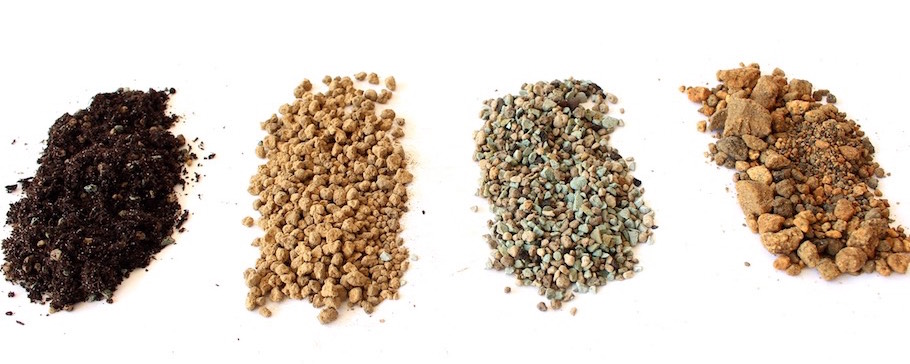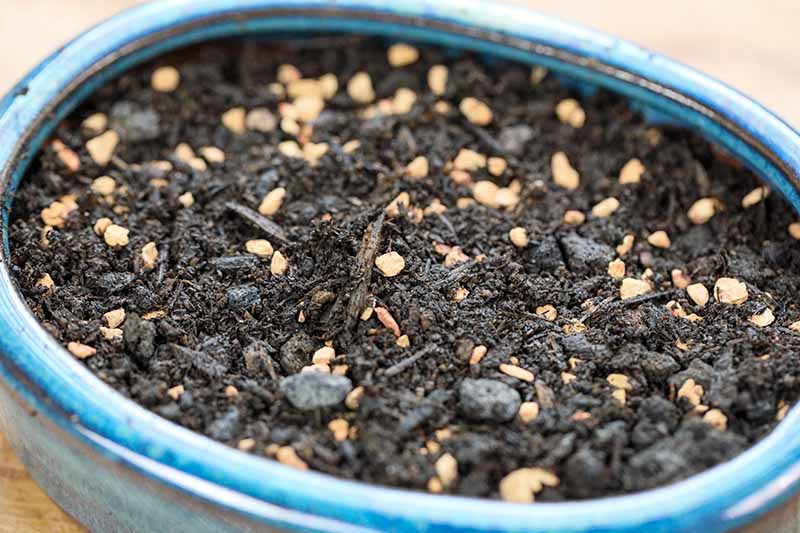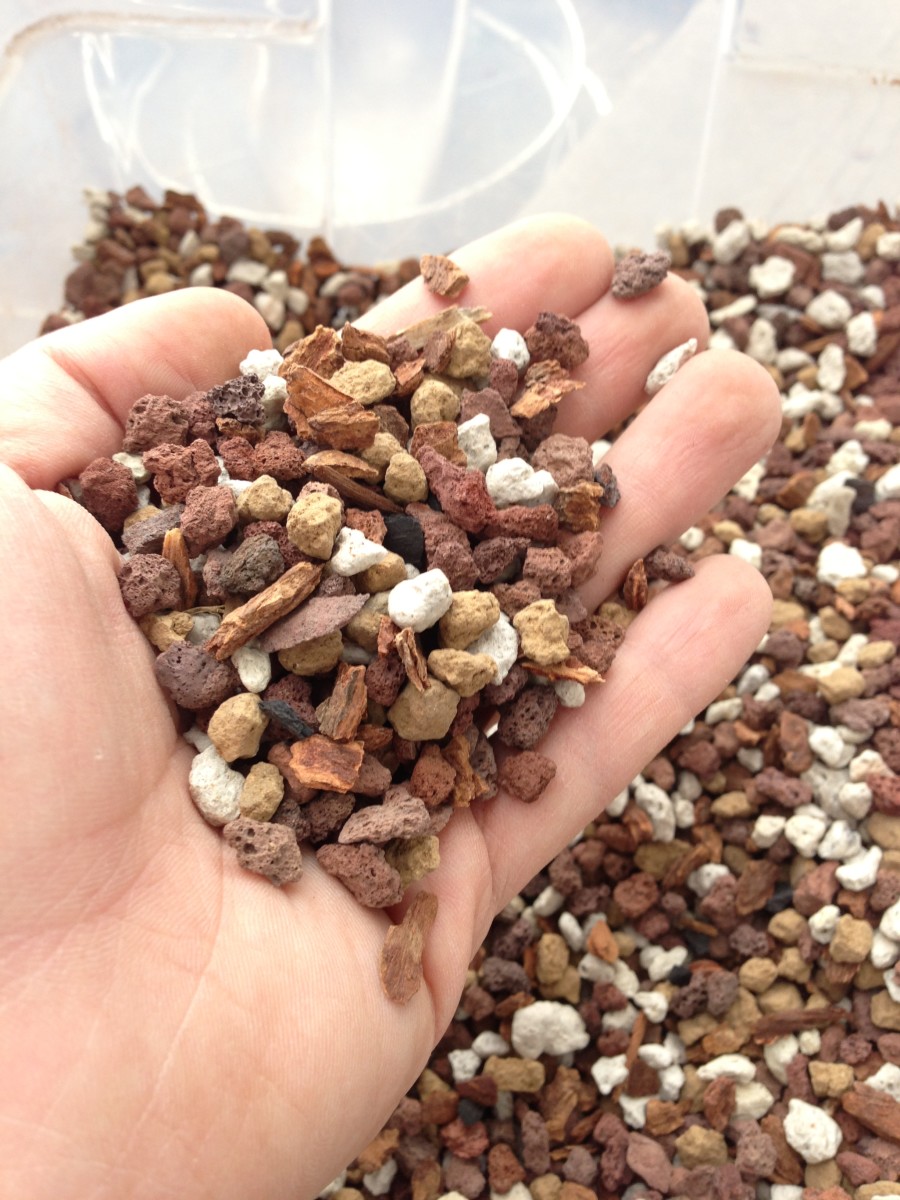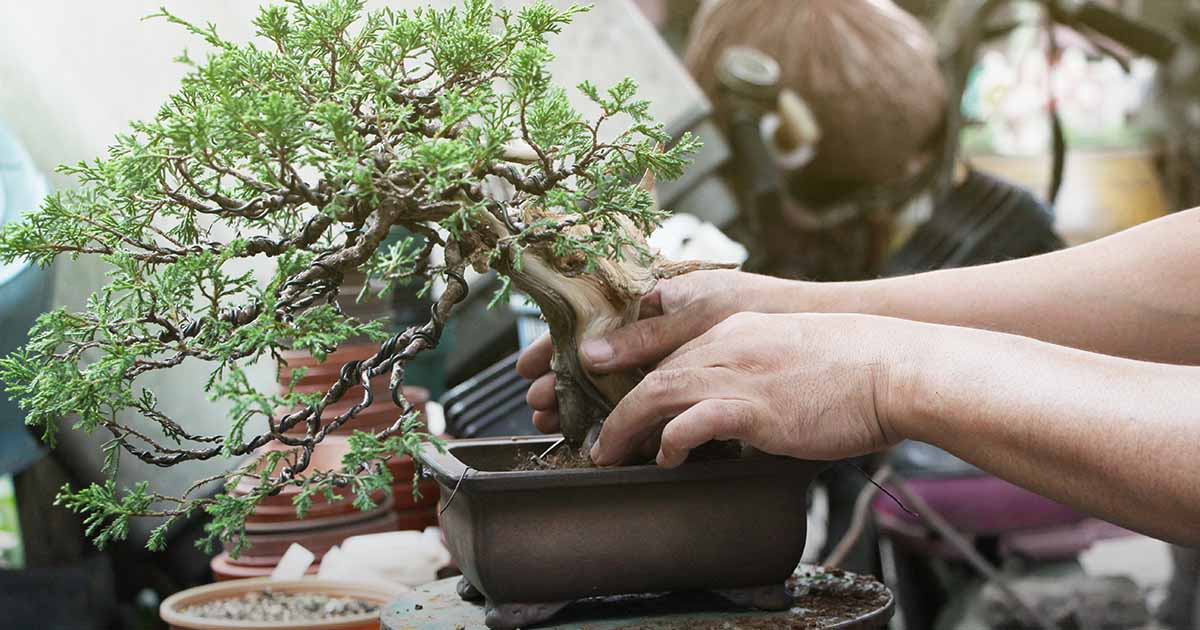In this article, we'll discover the differing types of soil and substrates Utilized in bonsai cultivation, which include natural and inorganic selections.
We'll also find out advised soil mixtures for various bonsai species, such as deciduous, coniferous, and indoor versions. From akadama and pumice to moss and river sand, we will dive in to the intriguing earth of bonsai soil and enable you to understand why it's an essential Section of cultivating these exquisite trees.

Bonsai soil
What is bonsai soil?
Bonsai soil is a specialized type of soil that is specifically formulated for growing and maintaining bonsai trees. Unlike regular garden soil, bonsai soil is well-draining and provides the necessary nutrients and moisture balance for the tree's root system. The composition of bonsai soil is carefully designed to meet the unique needs of bonsai trees, ensuring their health and longevity.
The importance of bonsai soil
The choice of soil plays a crucial role in the success of your bonsai tree. The right soil provides optimal drainage, allowing excess water to flow freely and preventing root rot. It also promotes a healthy and well-developed root system, which is essential for the overall health and growth of the tree. Bonsai soil retains moisture while allowing air to reach the roots, striking the perfect balance for the tree's needs. Choosing the right bonsai soil is essential for maintaining a healthy and thriving bonsai tree.
Bonsai substrates
What are bonsai substrates?
Bonsai substrates refer to the different materials that can be used to create the ideal soil composition for bonsai trees. These substrates are carefully chosen to meet the specific needs of different species of bonsai trees and to ensure proper water drainage and nutrient availability.
Different types of bonsai substrates
There are various types of bonsai substrates available, each with its own unique characteristics and benefits. Some common bonsai substrates include:
- Organic materials: These include ingredients such as bark, peat moss, and coconut coir. Organic substrates help retain moisture and provide essential nutrients to the bonsai tree.
- Inorganic components: These include parts like pumice, lava rock, and akadama. Inorganic substrates give outstanding drainage, making sure that excessive drinking water isn't going to accumulate across the roots of your bonsai tree.
- Soil amendments: They are substances that are added to the soil combination to boost its Houses. Examples of soil amendments contain perlite, vermiculite, and sand. They Enhance the soil's aeration, water-holding potential, and nutrient availability.
By knowledge the different types of bonsai substrates as well as their Attributes, you'll be able to select the best suited one particular for your personal bonsai tree's wants.
Natural or Inorganic Soils
Natural and organic soils for bonsai
Natural soils for bonsai are made up of pure components such as bark, peat moss, coconut coir, and compost. These components provide a rich supply of nutrients for that bonsai tree and endorse healthful root development. Organic and natural soils also have very good water retention Houses, making sure that the tree receives suitable humidity in between watering periods. On the other hand, it is vital to note that natural soils may possibly stop working eventually and turn out to be compacted, leading to inadequate drainage and probable root difficulties.
Inorganic soils for bonsai
Inorganic soils for bonsai encompass supplies like pumice, lava rock, akadama, and soil amendments like perlite or vermiculite. These supplies have exceptional drainage Houses, blocking waterlogged soil and promoting aeration across the roots. Inorganic soils are chosen by lots of bonsai fanatics because of their longevity and skill to supply a steady atmosphere for your bonsai tree's root method. Nonetheless, They might demand extra Recurrent watering and extra fertilization, as they do not hold as much moisture or nutrients as organic soils.
Pros and cons of utilizing natural and organic and inorganic soils for bonsai
Deciding upon in between organic and natural and inorganic soils for the bonsai tree is dependent upon numerous components, such as the precise species of tree, your weather, and personal preferences. Here are the advantages and drawbacks of every:
Natural soils:
- Pros: Deliver nutrients, fantastic water retention, promote healthier root improvement.
- Cons: May well break down over time, opportunity for very poor drainage if not effectively taken care of.
Inorganic soils:
- Execs: Exceptional drainage, lengthy-Long lasting, stable natural environment for roots.
- Disadvantages: Fewer drinking water retention, may have to have much more Recurrent watering and fertilization.
By looking at the pros and cons of both equally natural and inorganic soils, you may make an informed selection based on the specific demands of your bonsai tree.
Soil elements
Vital components of bonsai soil
Bonsai soil is usually composed of 3 most important components: grit, organic and natural make any difference, and clay. These factors perform jointly to create The perfect soil composition for the bonsai tree's root program.
- Grit: Grit, such as sand or perlite, supplies drainage and aeration during the soil. It helps avoid waterlogging and makes it possible for air to get to the roots.
- Organic make a difference: Natural subject, which include compost or bark, provides nutrients towards the bonsai tree. It also will help keep humidity and Increase the soil's In general structure.
- Clay: Clay particles supply some drinking water retention attributes and support bind the soil jointly. On the other hand, an excessive amount of clay can cause weak drainage and compaction.
Part of each and every soil ingredient
Each and every soil element plays a significant part in making a perfectly-well balanced and healthy atmosphere for your bonsai tree's roots.
- Grit: Grit gives the required drainage and aeration while in the soil. It stops the roots from sitting down in stagnant drinking water, minimizing the chance of root rot and promoting General root well being.
- Natural and organic matter: Organic issue gives vital nutrients on the bonsai tree. It aids in dampness retention and contributes to the overall construction on the soil.
- Clay: Clay particles support bind the soil jointly and provide some drinking water retention capability. Having said that, it's important to balance the level of clay to stay away from challenges like weak drainage and compaction.
By comprehension the roles of each soil component, it is possible to make a balanced bonsai soil blend that meets the precise requires of one's tree.

Recommended Bonsai soil mixtures
Common bonsai soil mixtures
There are several common bonsai soil mixtures that have been proven effective for various types of bonsai trees. These mixtures typically consist of a combination of inorganic substrates, organic matter, and soil amendments.
Some of the commonly used bonsai soil mixtures include:
- Akadama, pumice, and lava rock: This mixture is popular among bonsai enthusiasts for its excellent drainage and water retention properties.
- Akadama, lava rock, and natural and organic make any difference: This combination brings together the main advantages of inorganic substrates with the nutrient-rich properties of organic and natural matter.
- Pumice, perlite, and bark: This mixture provides superior drainage and aeration though retaining some humidity and delivering nutrients.
They are only a few examples of bonsai soil mixtures, and The best combination will rely on the precise requires within your bonsai tree along with your weather.
Components to think about when picking a bonsai soil mixture
When deciding upon a bonsai soil combination, it's important to look at the next variables:
- Species of bonsai tree: Diverse species have various humidity and nutrient necessities. Study the particular demands of your tree to pick a soil mixture that meets its necessities.
- Climate: The local weather you live in can impact the dampness retention properties in the soil. Evaluate the ordinary humidity and temperature in your area When picking a soil mixture.
- Watering routines: Your individual watering patterns and schedule must align Together with the soil combination you end up picking. Some mixtures call for extra Recurrent watering, while others retain humidity for longer durations.
- Budget: Some soil elements could possibly be more expensive than Many others. Contemplate your finances when choosing a soil combination.
By getting these components under consideration, it is possible to select a bonsai soil mixture that provides the most beneficial increasing disorders for your personal tree.
Deciduous Bonsai soil
Ideal soil composition for deciduous bonsai
Deciduous bonsai trees, including maple or birch, have certain soil requirements to aid their advancement and overall health. The best soil composition for deciduous bonsai normally includes a combination of natural and organic matter, inorganic substrates, and soil amendments.
A advised soil composition for deciduous bonsai may well involve:
- Akadama: Presents great h2o retention although allowing for for drainage. It also releases nutrients slowly with time.
- Pumice: Promotes aeration and drainage inside the soil, preventing waterlogging.
- Bark or peat moss: Adds natural make a difference into the soil, furnishing nutrients and humidity retention.
This soil composition makes certain that the roots of deciduous bonsai trees get the correct balance of humidity, nutrients, and oxygen for ideal advancement.

Coniferous and Pine soil
Ideal soil mixture for coniferous and pine bonsai
Coniferous and pine bonsai trees have specific soil requirements due to their water retention needs and preference for acidic soil. An ideal soil mixture for coniferous and pine bonsai should provide good drainage while retaining moisture and maintaining the desired pH level.
A recommended soil mixture for coniferous and pine bonsai may include:
- Akadama: Provides excellent water retention while allowing for sufficient drainage. It releases nutrients slowly over time.
- Pumice: Promotes aeration and drainage while in the soil, preventing waterlogged roots.
- Peat moss: Provides natural and organic issue and acidity into the soil, making a great pH amount for coniferous and pine trees.
This soil combination ensures that the roots of coniferous and pine bonsai trees acquire the appropriate stability of moisture, nutrients, check here and acidity for his or her particular demands.
Akadama
What exactly is akadama?
Akadama can be a kind of clay soil that is definitely widely Utilized in bonsai cultivation. It is actually recognized for its exceptional water retention Attributes, which guarantee a gentle supply of dampness to the bonsai tree's roots. Akadama is likewise prized for its ability to launch nutrients slowly but surely as time passes, giving a dependable supply of nourishment for the tree.
Great things about applying akadama in bonsai soil
Utilizing akadama in bonsai soil offers quite a few Advantages:
- Drinking water retention: Akadama has Outstanding drinking water retention Homes, allowing for it to carry humidity with no getting waterlogged. This makes certain that the bonsai tree's roots get a constant offer of water, marketing healthful advancement.
- Nutrient release: Akadama gradually releases nutrients in to the soil with time, supplying a reliable supply of nourishment for the bonsai tree. This lessens the need for Regular fertilization and will help sustain a well balanced nutrient profile.
- Aeration: Regardless of its h2o retention capabilities, akadama also provides adequate aeration to your bonsai tree's roots. It will allow air to reach the root procedure, protecting against concerns including root rot due to lack of oxygen.
By incorporating akadama into the bonsai soil, you'll be able to generate an ideal growing natural environment for your tree, guaranteeing its wellness and vitality.

Lava rock
How lava rock benefits bonsai soil
Lava rock is a popular component in bonsai soil mixtures due to its excellent drainage and aeration properties. It is typically used in conjunction with other substrates to create the ideal soil composition for bonsai trees.
The benefits of lava rock in bonsai soil include:
- Drainage: Lava rock provides excellent drainage, preventing waterlogging and ensuring that excess water flows freely through the soil. This helps prevent root rot and provides a healthy environment for the roots to thrive.
- Aeration: The porous mother nature of lava rock will allow air to circulate inside the soil, giving oxygen to the bonsai tree's root program. Right aeration is crucial for wholesome root growth and In general tree development.
- Longevity: Lava rock is actually a sturdy content that doesn't stop working easily. This makes certain that the soil construction continues to be steady over time, reducing the need for Recurrent soil replacements.
Lava rock is accessible in several sizes and shapes, permitting for customization according to the particular wants of your respective bonsai tree and soil needs.
Differing kinds of lava rock
There are different types of lava rock that can be Utilized in bonsai soil mixtures, such as:
- Black lava rock: Black lava rock is often a normally utilized material in bonsai soil mixtures. It provides great drainage Attributes and adds an aesthetic factor to the general presentation of your bonsai tree.
- Red lava rock: Pink lava rock is an additional well-liked choice in bonsai soil mixtures. It provides equivalent drainage and aeration Gains as black lava rock but has a definite reddish colour that adds visual desire to the container.
Both of those black and pink lava rocks are commonly obtainable and can be quickly included into your bonsai soil combination.
Potting
Essential strategies for thriving bonsai potting
Potting is actually a important approach in bonsai cultivation, as it specifically impacts the wellbeing and improvement of your tree's roots. Here are several important techniques for thriving bonsai potting:
- Pick the proper pot dimensions: Select a bonsai pot which allows for root advancement though however giving a cosy suit. Steer clear of pots which might be also large, as they can result in too much soil dampness and very poor root growth.
- Use bonsai wire: Safe the tree in the pot utilizing bonsai wire to guarantee stability. This stops the tree from shifting or turning into uprooted through watering or powerful winds.
- Trim and distribute the roots: Just before potting the bonsai tree, thoroughly trim and spread out the roots. This encourages outward growth and prevents root tangling or root-certain issues.
- Increase mesh screens: Location mesh screens more than the drainage holes at The underside in the pot to avoid soil erosion and be certain appropriate drainage.
- Use contemporary bonsai soil: When potting, generally use refreshing bonsai soil to offer the necessary nutrients and ideal rising situations for your roots.
By adhering to these critical guidelines, you are able to ensure An effective potting course of action and encourage the general well being and growth of the bonsai tree.
The job of bonsai pots in soil dampness Regulate
Bonsai pots Perform a vital position in soil humidity Command, directly impacting the wellbeing and growth of the tree. Bonsai pots are generally shallow and possess drainage holes, permitting excessive h2o to flee and avoiding the soil from starting to be waterlogged.
The design of bonsai pots promotes evaporation and air circulation, which assists regulate soil humidity levels. The shallow depth and large opening of your pot expose more floor spot of the soil to your air, aiding in moisture read more evaporation. This stops the roots from sitting down in excessively damp soil, reducing the potential risk of root rot as well as other drinking water-related issues.
Also, the drainage holes in bonsai pots make it possible for any surplus h2o to flee, preventing waterlogged soil and promoting aeration within the roots. Right aeration is important for the wellbeing and advancement of the root method, ensuring the bonsai tree receives the mandatory oxygen for expansion.
Through the use of bonsai pots made for productive dampness Manage, you'll be able to develop a favorable surroundings for the bonsai tree's roots and promote its General wellbeing and vitality.
In conclusion, deciding on the proper bonsai soil is vital to the achievements and overall health within your bonsai tree. Knowing the different types of bonsai substrates, the job of natural and inorganic soils, the key elements of bonsai soil, and the assorted proposed soil mixtures will help you present the optimum escalating circumstances for your personal bonsai tree. Whether or not you've got a deciduous or coniferous bonsai, incorporating products like akadama and lava rock can enrich the soil's drainage and nutrient availability. In addition, listening to potting tactics and making use of bonsai pots suitable for moisture control will even more aid the flourishing advancement of one's bonsai tree. With good knowledge and implementation of bonsai soil practices, it is possible to enjoy the attractiveness and artistry of bonsai cultivation For several years to come.
